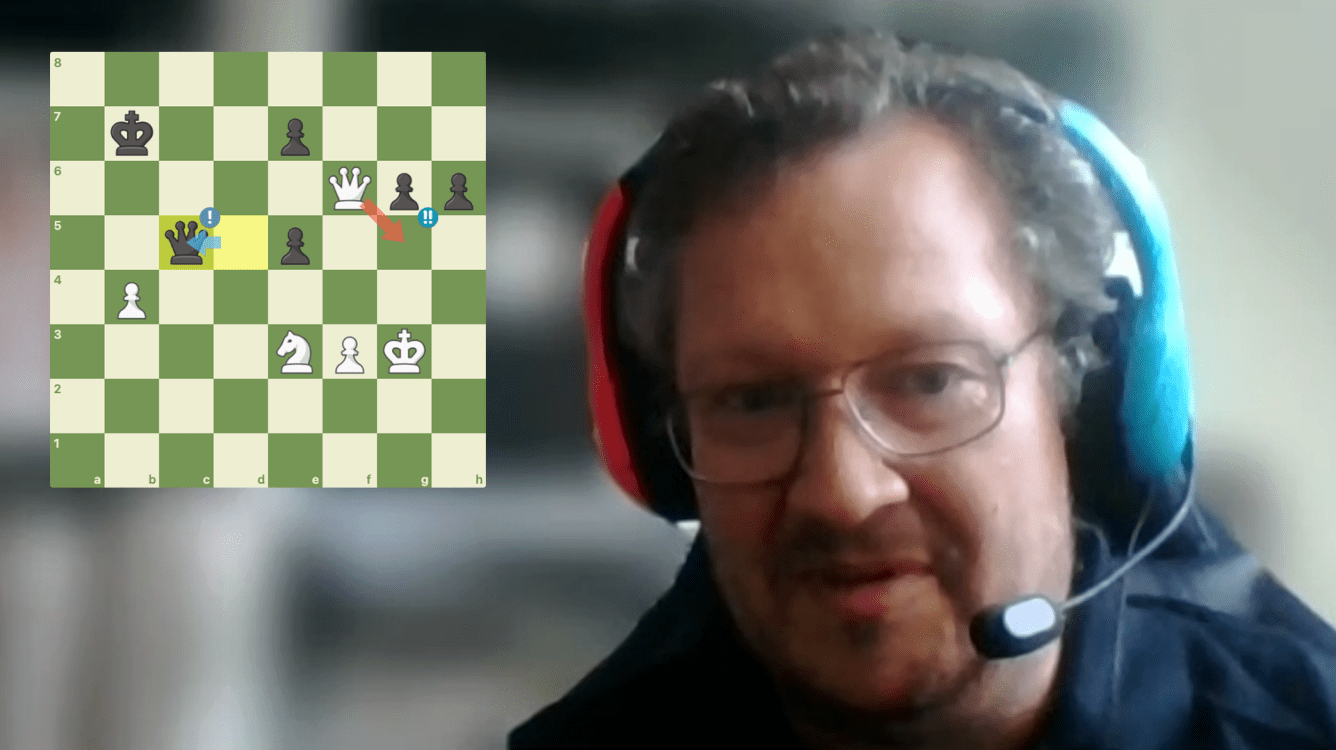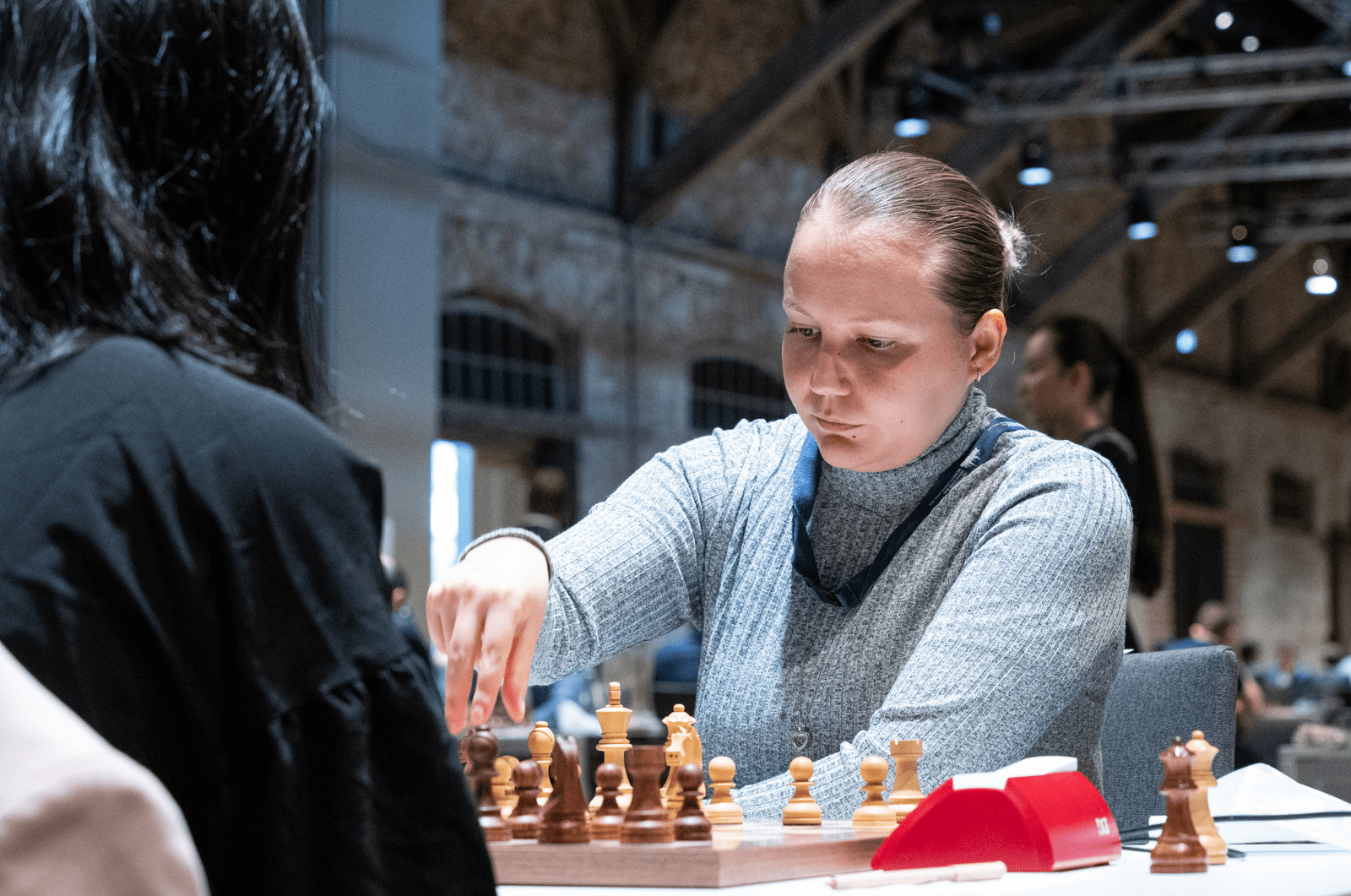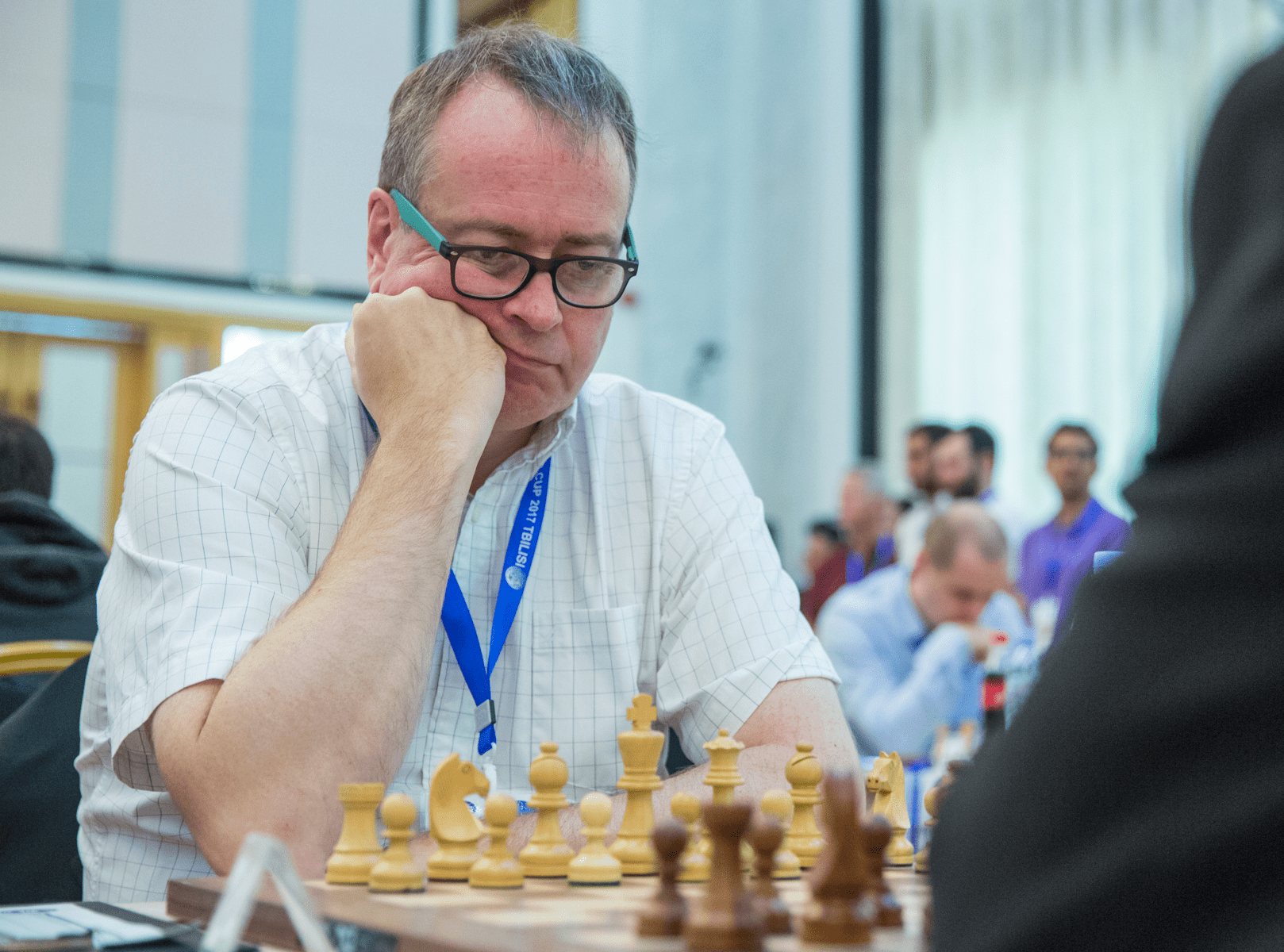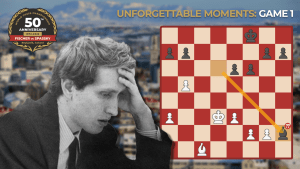
World Champion Steffen Nielsen On The Art Of Chess Study Composition
In August, Steffen Slumstrup Nielsen of Denmark became the new world champion of study composition. In November, he will be officially awarded in Fujairah, UAE. Interviewed by Chess.com, Nielsen tells about the world of chess studies.
"I'm a little bit in shock still," says Nielsen in the Zoom call. His Twitter notes give a similar sense of bewilderment: "Chess study composer and chess enthusiast. International master of FIDE for chess compositions. World Champion of studies, apparently."
47-year-old Nielsen is a journalist who works for the magazine Komputer for Alle, the largest computer magazine in the Nordic region, with about 50 thousand copies distributed in Denmark, Norway, Sweden, and Finland. It is dedicated to a wide audience and provides tips and tricks for average computer users.
He started relatively late with chess, joining a club when he was 13 years old. "Before that, I went to the local library and looked at chess books on my own, until I found the club not far from my home."
That was in Skørping, but Nielsen now lives in Copenhagen, with his wife and three kids. Rated 2190 FIDE, he reached a very decent level of play for an amateur. His last serious tournament, however, was about 15 years ago. "I guess I had a fair amount of talent but no strong drive, in the end."
Nowadays, Nielsen's play is limited to about one league game a year. "I have a family, and composing is more suitable for families. You don't have to be away for five-six hours; you can take 10 minutes here, 10 minutes there, on your computer or phone."
Early on, he got interested in chess curiosities, like special problems, amazing moves, or dramatic games. Like many composers, he often visited Tim Krabbé's website, which isn't updated regularly anymore but still forms a great resource for the rare and the amazing in chess.
Besides the world title, Nielsen has won a few more prizes for chess composition, such as the fairly prestigious 2016 FIDE World Cup tournament, and 2011 tournament dedicated to GM Jan Timman's 60th birthday. In 2018, Nielsen won bronze at the world championship.
Asked about his first steps into the world of composition, he said: "I composed some very bad stuff already in the 1990s. I was between 20 and 25, and I found them on an old computer. They were all cooked, they had duals, they didn't work. But at the time I found them interesting."
Nielsen's chess eye is very much focused on tactics and in general, he loves spectacular games, mostly seen in blitz. "When all the pieces are hanging, that's when I feel at home. The rapid and blitz world championships, between Christmas and New Year, that's the best time of the year."
When all the pieces are hanging, that's when I feel at home.
Besides simply enjoying the drama, he also tends to see moves or combinations that can be inspirational for a study. An example is the following game, which we also covered in our report on the first round of the 2021 FIDE Chess.com Grand Swiss.

In the magazine The Macedonian Problemist (issue 67; January-April 2022, in PDF here), Nielsen comments that the idea in this game was "perfectly suitable for studies, but which apparently had never been done before." He dissects it as follows:
- Piece A and piece B can both be sacrificed on square X.
- Piece A is sacrificed on square X. The sacrifice is declined.
- Piece A moves away.
- Piece B is sacrificed on square X.
- The sacrifice by piece A in some way logically prepares for the second sacrifice.
Here's the study he composed based on the game:
White to play and win.
In April of this year, the Reykjavik Open saw an exceptional moment in the game between veteran GM Johann Hjartarson and Andersen. The Icelandic player, who was a world championship candidate in the late 1980s, did not just miss a win—he missed a unique under-promotion to a bishop as the only move to win the position:

Three days after the game, Nielsen tweeted: "This is a study waiting to happen. I promise that :-)" And then, 18 days later, he published his study, also on Twitter. Here you can try it yourself:
White to play and win.
"That's the greatest feeling, when you set out to do something, you say: 'Let's try to make all three promotions work,' but you have no idea if it's possible. If you don't succeed, you don't know if it's because of your own limitations or because it simply cannot be done. So you set out and when you succeed, that's the best feeling."
You set out and when you succeed, that's the best feeling.
Chess players trying to improve often wonder: "Why should I look at endgame studies?" Nielsen recognizes this and says he often gets asked: "What's the point of learning this beautiful move that will never occur in a million games? It doesn't add anything to endgame theory, so it's far away from my play?"
His answer: "I think what all composers are trying to do is try to expand chess. With a limited amount of pieces on the board, you sometimes get the feeling that it's exhausted, you've seen it all. But chess is not like that at all. It's not easy, but it's still possible to find new stuff with a few or more pieces, and it's part of the game. Why focus the next full month on learning all the nuances of the Semi-Slav when instead, you can discover something that is completely new to chess, even though it's just a detail? We are expanding the horizons."
Nielsen's world championship title is remarkable when you realize that he has only been seriously composing studies for just over a decade. The story about how it all started for him is a funny one.
"The very first study I composed, I sent to the London 2012 tournament held by the British Problemist Society in honor of the 2012 Olympics. I worked on that study for at least five years, because I remember showing it to a friend in 2007. However, I failed miserably. It didn't get any award in this tournament and I thought: OK, maybe I have no idea about this stuff. Then I made another one for a Czech tournament and it got fourth commendation, a low place. And then, the third study I made was for the Timman-60 tournament, and I suddenly won first prize. That was my breakthrough study."
White to play and draw.
Tournaments like these usually work as follows: composers send their study or studies (usually up to three are allowed) to the organizer, who then sends them anonymously to a single judge or jury of multiple judges. They give points to the different studies and only learn about the names of the composers after deciding on the rankings. In this case, Timman himself was the judge.
Looking back at his very first study that he sent in for London 2012, Nielsen understands why it didn't win a prize but still feels it was not bad. "There was no focus. It had a lot of action for about 20 moves, but it lacked a central idea. You always need a central idea. But I still think it could have gotten an award, it was ambitious enough."
Below is the study. Since it was never published before, it is an original for Chess.com.
White to play and win.
It is not uncommon for composers to spend years on a study before finishing it. They don't work on it full time obviously, but they keep coming back to it. "I have a file on my computer called single.pgn, where I have saved about 150 positions and ideas that aren't finished yet," said Nielsen. "When my wife saw it, she thought it meant that it was my dream to become single again!"
I have a file on my computer called single.pgn. When my wife saw it, she thought it meant that it was my dream to become single again!
The long history of chess study composition goes back even further than regular chess. The earliest examples of chess "puzzles" are Shatranj studies that can be found in manuscripts from the ninth century, while Lucena and Damiano published positions in the late 15th and early 16th centuries. The go-to database of endgame studies is the one updated annually by the Dutch composer Harold van der Heijden; its latest version contains 93,839 studies.
A video made by the author of this article back in 2010, when Van der Heijden just presented a new version of his database in the Max Euwe Center in Amsterdam. In the past 12 years, the database has grown much bigger. Jan Timman and Yochanan Afek are also featured in the video.
With so many existing studies, the main challenge these days for composers is to find something that hasn't been done before. "That's the main question of the study composers at the moment. Are we running out of ideas, or are we not? My take is that we are very far from running out of ideas, just like I don't believe there is a 'draw death' in regular chess."
A lot of composers, including Nielsen, work on mixing already known themes. For instance, in the early part, one idea is shown, and later there's another idea. Both are known, but put together they have value.
Nielsen points out that with the "creative bar" being set higher and higher, also the number of pieces in studies gets higher and higher: "It's difficult to find new stuff with five pieces. They did that 100 hundred years ago. It's still possible, but it's very difficult."
In the last Timman composition tournament, when the Dutch legend turned 70, the first six prizes had an average of 13 pieces in the starting position. Nielsen: "You could say those are not endgame studies anymore, they're more like middlegame studies."
It still happens, every now and then, that someone finds something with a small number of pieces, which usually astounds everyone. Nielsen himself made a discovery recently with just five pieces. "I still cannot believe this idea had been lying around for 100 years without someone picking it up. It was a lucky discovery."
White to move and win.
I still cannot believe this idea had been lying around for 100 years without someone picking it up.
The process that led Nielsen to finding it, tells a lot about how studies are made these days: with the help of computers. "I was looking at another study and in the end, White had two obvious ways to win. However, my computer was showing a third way, which I did not believe. But then I checked it, and the beauty was in the computer line, which I used to create a new study."
Also when starting from a fresh idea, Nielsen's computer is a tool that comes in early in the process. "Normally I start the engine and have it show four lines. I set up the position and see for example that White wins easily in all four top lines. So, I need to give Black some extra counterplay so that White only wins in one line, for instance. That's how I work at it, after having the idea. Because, without the initial idea that forms in my head, computers are not very helpful."
Nielsen says that the use of computers is "both good and bad." Although they are very helpful, it also makes a difference when the study composer is a strong player himself. An example is Yochanan Afek, who is a grandmaster of study composition but also an IM in over-the-board play. His studies tend to be useful for the practical player, because the inspiration often comes from his knowledge of theoretical endgames.
"He has a big advantage there," said Nielsen. "Sometimes I feel that just sitting with the computer, my studies are a bit too removed from a practical game because they are a little artificial."

Another way is to use tablebases for six or seven pieces, on which you can do mining and look for reciprocal Zugzwang positions. The composer can create one line that is winning for White, and one line that is winning for Black, and then you have a study. This is not how Nielsen works, but not necessarily because it's less creative.
"It is creative, but this mutual Zugzwang position also has to be understandable to normal chess players. You cannot have a position where White wins after 25 difficult moves. And also, building the "introduction" with all the moves leading to that position is very difficult, and not exciting, to me at least."
"Otherwise it's not an art," argues Nielsen. "For me, the audience is very important. There are, however, composers who work very differently, for example, they set themselves the task to create a study where three pawns are promoted into knights, or something like that, which is far removed from practical play. But it's difficult because if you want to please the audience, it's probably been shown before and if you do something very difficult, like a task study, there's a big chance that the audience will not be interested. You have to find the middle ground somewhere."
White to play and draw.
In order to be able to come with new ideas, study composers need to have a vast knowledge of existing ideas. All of them know a large number of studies (many hundreds, if not thousands) from magazines and other publications, similar to top grandmasters having thousands of opening lines (and some endgame theory!) in their heads.
"It still happens that you get excited about something and then you check Van der Heijden's database, and it's there. That's just a shame because you cannot publish it again, of course. So you have to find the right moment to check the database. Don't spend one month on something and find out that it's been done before, but also, don't look too early because then you lose the fun of the creative process with it."
Nielsen sometimes makes chess problems as well, which is something different than chess studies. Problems are usually "mate in X number of moves," or helpmates, where one needs to find Black's weakest defense that leads to the quickest mate.
Is the world title for chess problems a new goal for Nielsen? "No," he said modestly. "The helpmate genre is full of the most brilliant minds you'll ever meet. There are some helpmate composers who have created stuff that is well beyond my imagination and skill level. I guess they say the same about me and studies."
The helpmate genre is full of the most brilliant minds you'll ever meet.
It should be noted that, as another subfield in the niche of chess problems and composition, there are also world championships for solving them. Some over-the-board grandmasters have won this title, such as GM John Nunn and GM Kacper Piorun, but interestingly, there's now a new kid on the block beating everyone: the only 20-year-old Danila Pavlov from Russia.
Because Nielsen has only been composing studies for a relatively short time, he has become world champion before getting the grandmaster title for composition—like for example the aforementioned Afek. He is close, though.
"There is a points system. Each time you get a study into the FIDE Album [the official publication of FIDE's Permanent Commission for Chess Compositions - PD], a book containing the best chess problem and studies, you get 1.66 points for the study. You need 25 points to become IM, and 70 for GM. I am currently on 69.5, so I need half a point to become grandmaster. It should happen in a year from now."
The book is often delayed and currently people are waiting for the book covering 2016-2018, which is expected to be coming out this fall. With the book for 2019-2021, Nielsen will cross the 70 points mark. It's a nice touch because it was the same cycle where he became world champion.
Below is a study by Nielsen that went kind of viral on Twitter as it was called the "double mouse-slip" study. At some point, both sides make a ridiculous-looking queen move where it can be taken by a pawn:
White to play and win.
World champion titles are also awarded for three-year periods. Composers can submit between four and six studies. A jury of five judges ranks them, with the top and bottom scores being removed and the three remaining scores counting. Studies are ranked on a scale from one to four, so the maximum score for a study is 12 points. Because only the four best studies count for the score, a composer can get a maximum of 48 points.
For 2019-2021, Nielsen reached a total 40.5 points, incidentally the exact same score he got in the previous cycle (2016-2018), but then it was only good enough for third place.
FIDE Study Composition World Championship 2019-2021
| # | Fed | Name | Score |
| 1 | Steffen Nielsen | 40.5 | |
| 2 | Oleg Pervakov | 39 | |
| 3 | Serhiy Didukh | 37.5 | |
| 4 | Vladislav Tarasiuk | 36.75 | |
| 5 | Martin Minski | 36.5 | |
| 6 | Jan Timman | 35.5 | |
| 7 | Michael Pasman | 35.5 | |
| 8 | Yuri Bazlov | 34.5 | |
| 9 | Arpad Rusz | 34 | |
| 10 | Sergey Osintsev | 33.5 | |
| 11 | Petr Kiryakov | 33.5 | |
| 12 | Amatzia Avni | 33 | |
| 13 | Richard Becker | 33 | |
| 14 | Luis Miguel Gonzalez | 33 | |
| 15 | Alexey Sochnev | 33 | |
| 16 | Pavel Arestov | 32.5 | |
| 17 | Jan Sprenger | 32.5 | |
| 18 | Branislav Djurasevic | 32.25 | |
| 19 | Yochanan Afek | 32 | |
| 20 | David Gurgenidze | 30.75 |
Nielsen is especially amazed by the fact that he finished above the Russian legend of composition, Oleg Pervakov. "To me he is the best study composer of all time," said Nielsen. "He made so many deep works that are humanly understandable but are still appreciated by the strongest grandmasters. He's a genius. The only one comparable, maybe, was Genrikh Kasparyan, who didn't have a computer."
Asked what makes Pervakov so good, Nielsen basically describes what a great endgame study looks like: "I think he has a very good feel for the fact that chess is a battle. He gets some small idea, for instance, 'here the black queen is dominated,' and then he creates an epic story around this fact, and he makes sure that Black makes some spectacular moves as well. Also, throughout the solution, he makes sure there are some small choices for both White and Black that are meaningful and coherent with the rest of the solution. His studies are often very difficult to solve with epic solutions that are up to 20 moves and that are interesting throughout; you never get bored. You're like: "Now White wins, what's the problem?" Then Black makes a move and you think: OK, it's a draw, and then it's White's turn again to turn the tides."
So far, Pervakov has made about five hundred studies and Nielsen estimates he has collected at least 150 points for the FIDE Album, which would mean the Russian composer has already made the GM title twice.

After hearing the news of collecting the highest number of points and therefore achieving the world championship title, Nielsen celebrated by having "a small glass of champagne" with his wife that evening.
"Of course, it's kind of crazy," he noted, putting things in perspective. "It's like figure skating; the judges have some aesthetic criteria but it's very subjective in the end. Some composers don't even participate because of this reason; they argue that it's ludicrous to have a world championship in an art form. And indeed, you don't have this for paintings either. I think, morally, this is true, but I like the title anyway."
Here are four more studies for you to solve:
White to play and win.
White to play and win.
White to play and win.
White to play and win.
If this article inspired you to solve more endgame studies and you are looking for composers that made studies especially suitable for tournament players, Nielsen recommends Yochanan Afek, Amatzia Avni (both from Israel), and Martin Minski (Germany).




